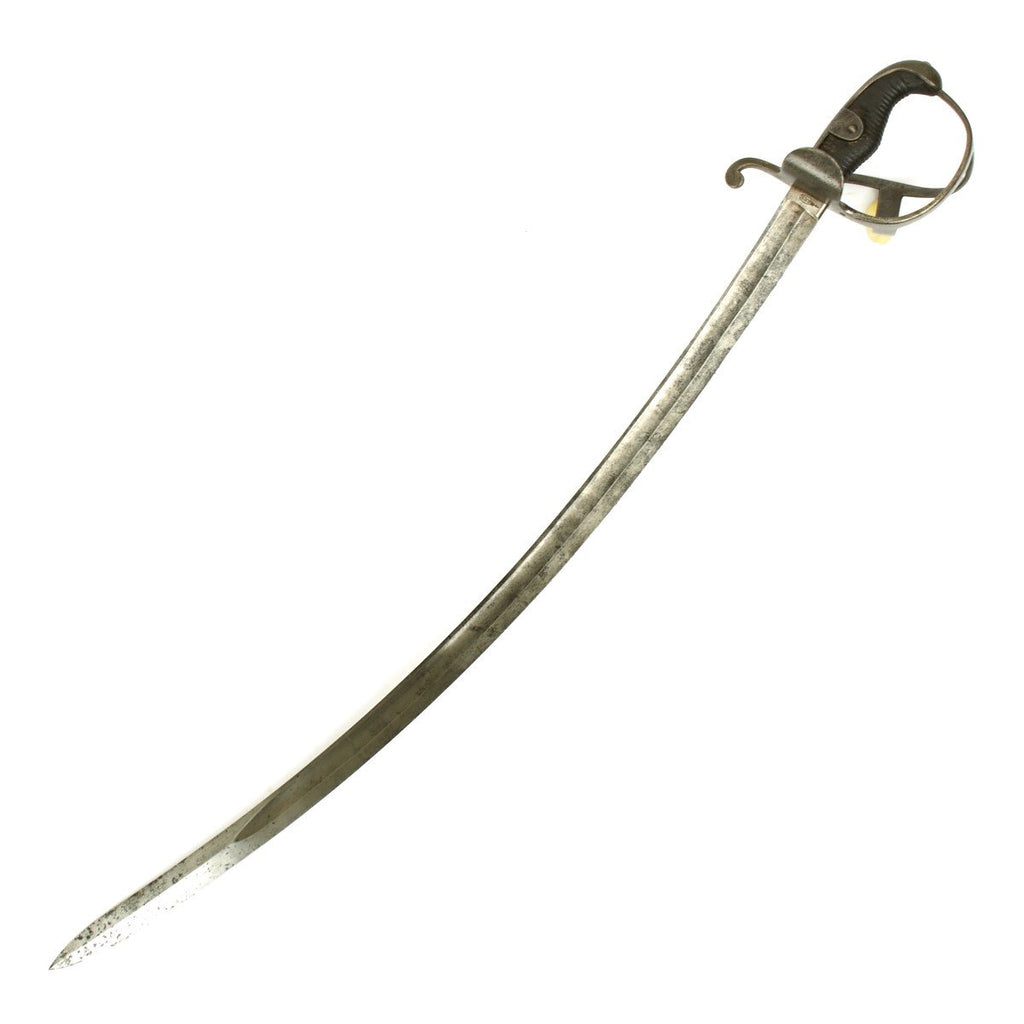-
Original Item: Only One Available. This is a most interesting rare sword. Mid 19th Century the Prussian Cavalry was still equipped with the so called "Blucher-sabre" P1811. It had a simple stirrup hilt, which offered little protection for the hand, when used in combat. Some attempts were made to improve it by screwing on some bars, but it did not work. After a battle in July 1848 with Danish Dragoons a Prussian trooper complained in a letter about his sabre. Three of his comrades had had their fingers cut and knuckles wounded in the battle due to lack of proper hand protection. Much to the envy of their opponents Danish troopers carried a basket hiked sabre (P1843), which proved very successful.
Due to several complaints about cavalry sabres the Prussian War Department decided to carry out certain trials with a new type of sabre, which resembled the Blucher with the extra bars, but was a completely new design. Until recently this sabre was unknown to German collectors and historians. The unidentified specimen was found in a Danish collection. The crowned FW immediately pointed in the direction of Prussia (Frederick Wilhelm IV, 1840-61) and it has now been established that this type of sabre was issued to a whole regiment of Prussian Hussars probably as early as 1848. One would have found it obvious to try these sabres in real combat, e.g. against the Danes during the Schleswig-Holstein uprising in 1848-49-50. This may also have happened and thus explains the presence of the sabre in Denmark. Again the trials were not successful enough to convince the War Department. However, it most likely led to the design of the well known Prussian Light Cavalry Sabre P1852. Eventually the batch of experimental sabres was abolished and sold to England, who made fine use of them in the Crimean War (1853-56).
Zeitenhusaren estimates that there were no more than 800 sabres of this model ever made and to top that off, no German museums have this type in their collections.
This sword sold to England was used by the British for trials in 1879. It features the standard 19th century heavily curved German Cavalry blade which has been German proofed and marked on the spine of the blade:
FW 50
The FW stands for Fredrich Wilhelm and 50 indicates 1850, and is located beneath a crown proof. It has the normal "Bluecher Sabel" leather covered wood grip and steel knuckle bow. However this special example has been fitted with a basket guard for the protection of the right hand mounted on the standard knuckle bow. L8 under the crown are Liege (Belgium) inspection stamps.
This example carries the head to head Broad Arrow markings on the blade indicating, the first broad arrow, as being taken into British Service, and the second facing broad arrow indication that it was "Sold out of Service.
This sabre is of the first generation made by Schnitzler und Kirschbaum. The second generation was made by Weyersberg.
Although initially accepted for British mounted troops due to blade length and weight the contract was cancelled and the 23 trials swords sold out of service.
The Sword can be found in "THE BRITISH CAVALRY SWORD from 1600 by CHARLES MARTYN published 2004 by Pen and Sword Books Ltd., of Barnsley in Yorkshire, England. See pages 125- 126 which includes a photograph. Attached to the sword is an old card label stating;
Rare British Trials Sword for Engineer Drivers, Circa 1889
German, Sword Cavalry Univrsal, 1889 Pattern for use by some British Mounted Troops, notably for Engineer Divers.
Most unusual and very rare, our fine example is from this original trials delivery, fewer than 800 ever existed.
- This product is available for international shipping.
- Eligible for all payments - Visa, Mastercard, Discover, AMEX, Paypal & Sezzle


We Buy Military Antiques
Our team expert buyers travels the world to pay fair prices for entire estate collections to singular items.
START SELLING TODAY



















